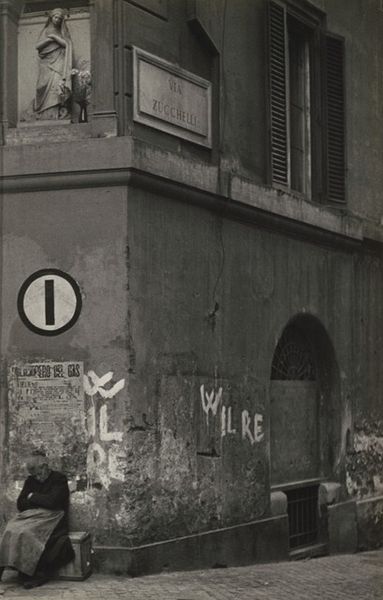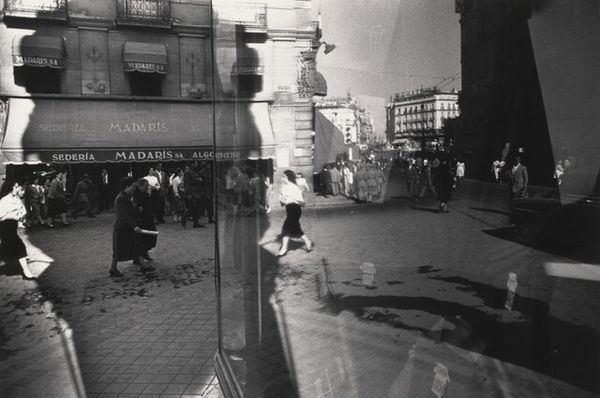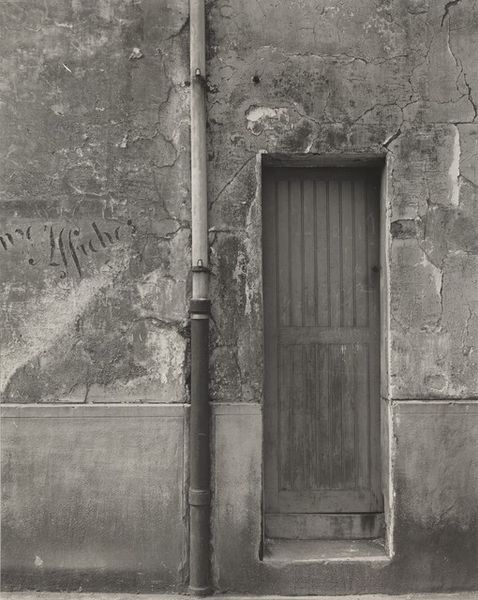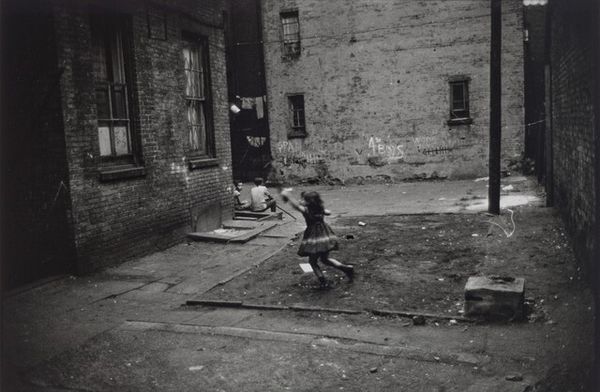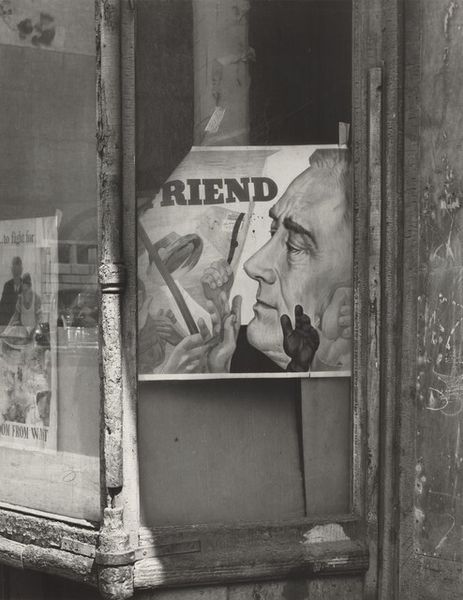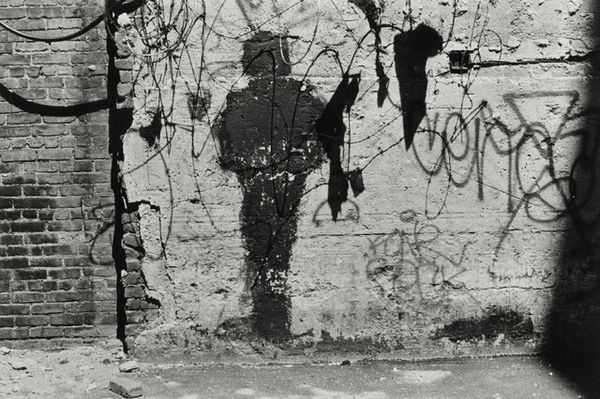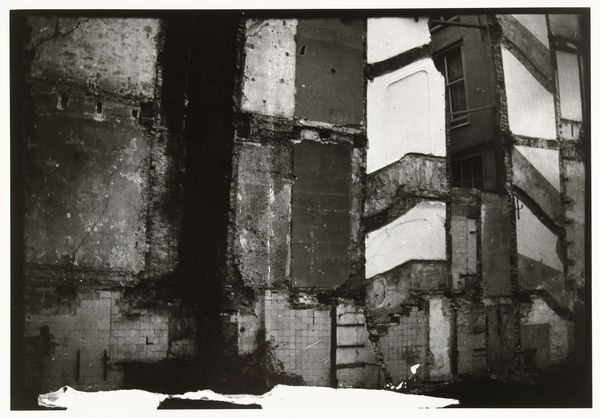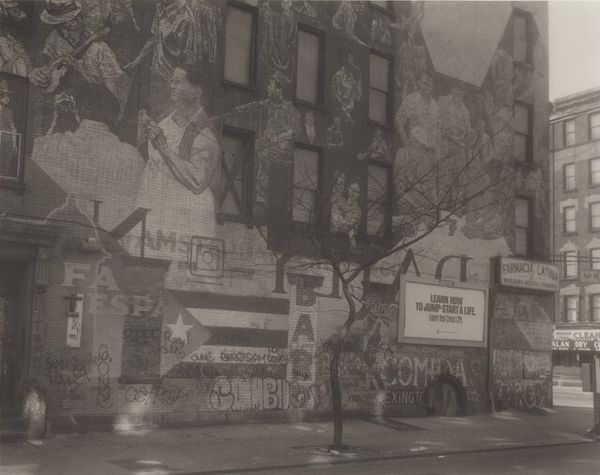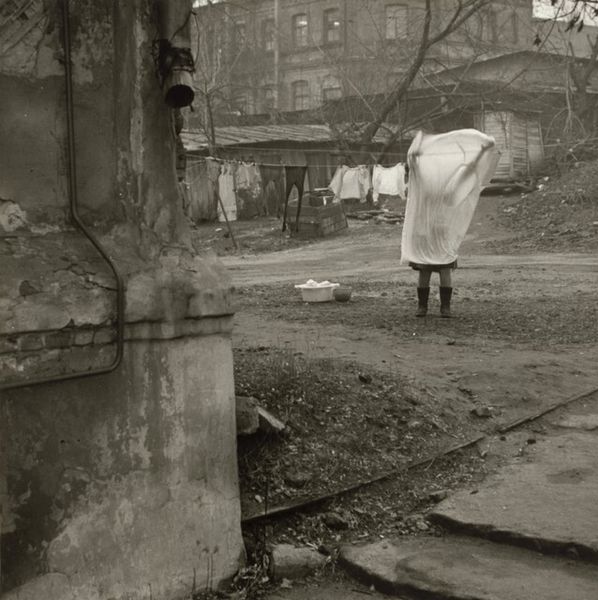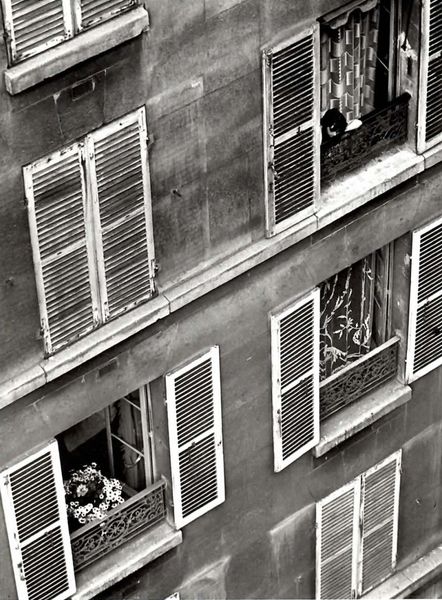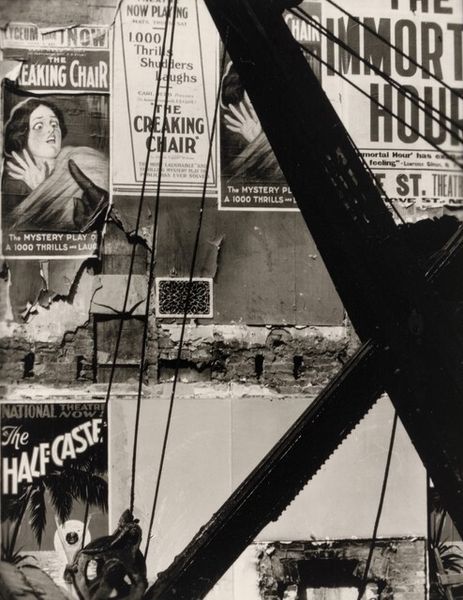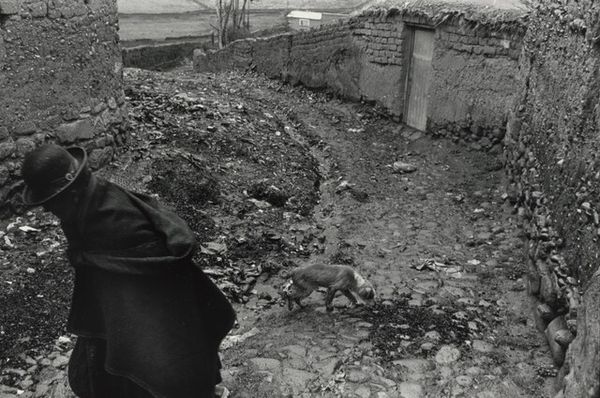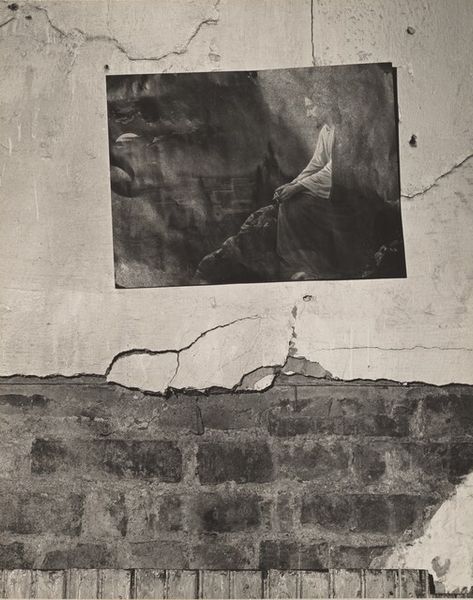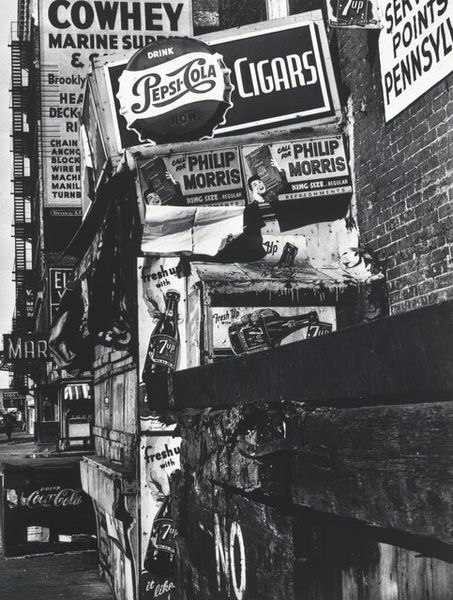
Dimensions: image: 22.1 × 32.75 cm (8 11/16 × 12 7/8 in.) sheet: 27.94 × 35.24 cm (11 × 13 7/8 in.)
Copyright: National Gallery of Art: CC0 1.0
Editor: We are looking at a photograph entitled "Sarajevo, Bosnia and Herzegovina," likely taken between 1995 and 2000 by Leslie Fratkin. It’s a gelatin-silver print, capturing a war-torn cityscape. What immediately strikes me is the stark contrast between the damaged buildings and the poster of a dancing couple – it’s both beautiful and incredibly sad. How do you interpret this work? Curator: This photograph is rich in material and social commentary. Notice the surface texture – the cracked walls, the peeling poster, and the gritty street. These are not just aesthetic details, but tangible evidence of conflict and neglect, shaping the lives of people in this city. How does the photographic process itself, the gelatin-silver print, contribute to this feeling? Editor: The monochrome really enhances the feeling of decay. It's like the colour has been stripped away along with the lives damaged by the conflict. Curator: Precisely! Think about the labor involved in producing such an image, the photographer venturing into a dangerous zone, documenting the real-world consequences of political choices. The image becomes a form of cultural production reflecting wider societal failures. What do you make of the placement of the "dancing couple" poster? Editor: It’s tragically ironic. It’s a symbol of celebration plastered onto a crumbling wall. Almost taunting the viewer. Curator: And consider the materiality of that poster itself. It's torn and peeling, yet the image persists. It speaks to the resilience of culture even amidst destruction. The juxtaposition makes us question what remnants and fragments become symbols during conflicts and who consumes and repurposes these materials. Editor: I see. It's not just a picture of a ruined building; it's about the human stories etched into the very materials of that city and what meaning the citizens give to these cultural products. Curator: Absolutely. The value lies in understanding how Fratkin documented and preserved these layers of meaning and experience through the lens of the camera and how this cultural preservation has outlived its intended temporal shelf life.
Comments
No comments
Be the first to comment and join the conversation on the ultimate creative platform.
